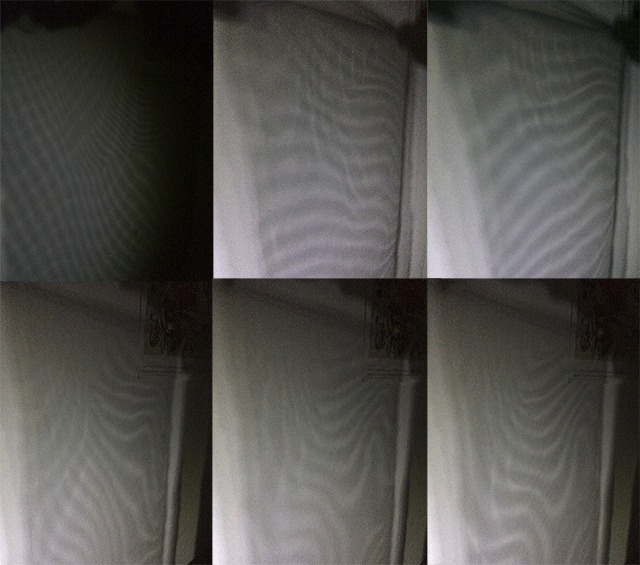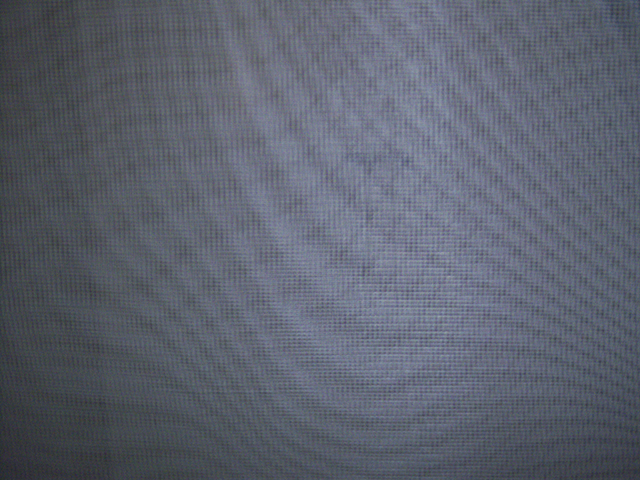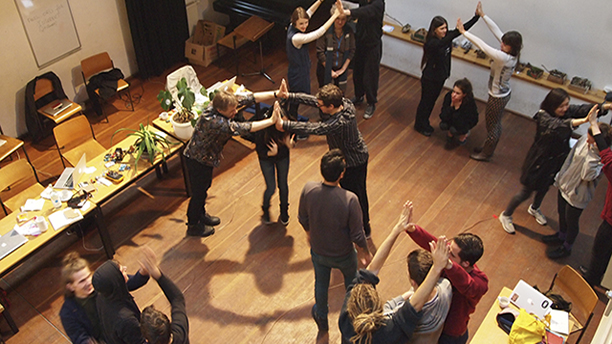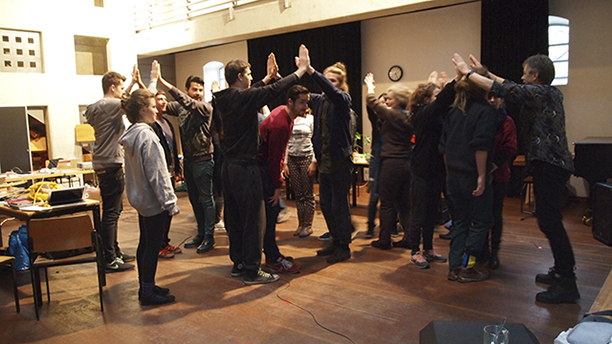Experiments
Bodies reacting to a physical interference
Interference patterns with light and shadows
"The phenomenon of "Moiré patterns" is an early instance of emergent form: the superposition of two simple patterns gives rise to a new, more complex pattern which is unrelated to each of its constituents: it is an interference pattern, generated by the interaction between the constituents.
A diffraction grating is a transparency with ruled parallel lines so close they cannot be seen with the naked eye. But if two such gratings are superimposed, with slightly different rulings, a pattern analogous to the beats of sound becomes entirely visible, in fact a good alternative name for moiré patterns would be 'visible beats'. One is provoked to conjecture that the fundamental nature of matter is based on such a principle. Perhaps all we can observe in nature are moiré fringes produced by something analogous to diffraction gratings in which the distances between adjacent lines are so small that there is no method known for their direct observation, even with an electron microscope. This suggestion would fit in well with the theory of 'winding space', where space is assumed not to close in on itself but to just miss, that is, instead of being a hypersphere it is a sort of hyper-helix."
taken from: http://radicalart.info/AlgorithmicArt/moire/index.html
Idea
Every human been affects their own environment and also the space that we share with the flora and fauna and even with other people, so how a "simple movements" like walking, running or jumping in the same space, starts to affect the personal space.
With the overlapping of the data of the people moving in the tracking room, I propose to create a visual projection, that show these movements through the possibilities of generative art concept.
"Personal space is the region surrounding people that they regard as psychologically theirs. Most people value their personal space and feel discomfort, anger, or anxiety when that space is encroached. Permitting a person to enter personal space and entering somebody else's personal space are indicators of how the two people view their relationship. There is an intimate zone that is reserved for lovers, children, and close family members. There is another intermediary zone that is used for conversations with friends, to chat with associates, and in group discussions. There is a further zone that is used by strangers and acquaintances, and finally, a zone that is used for public speeches, lectures, and performances.
The size of one's sense of personal space is culturally determined, in addition to being dependent upon the nuanced relationship of the two interlocutors. Averaged estimates place one's sense of personal space at two feet on either side, 28 inches in front, and 16 inches behind for an average Westerner. Those living in densely populated places tend to have a smaller sense of personal space. Moreover, individual sense of space has changed historically as the notions of boundaries between public and private spaces have evolved over time.
Senses of personal space are intimately tied to the relationship between the two individuals involved. Entering someone's personal space is normally seen as an indication of familiarity. However, in modern society, particularly in crowded urban communities, it is sometimes difficult to maintain personal space; for example, in a crowded train. Many people find such physical proximity to be psychologically uncomfortable, but it is accepted as a fact of modern life. Sociologists study personal space precisely because of social implications of distance in regard to relationships."
Source: Boundless. “Personal Space.” Boundless Sociology. Boundless, 21 Jul. 2015. Retrieved 17 Nov. 2015 from https://www.boundless.com/sociology/textbooks/boundless-sociology-textbook/social-interaction-5/types-of-social-interaction-51/personal-space-323-8973/




